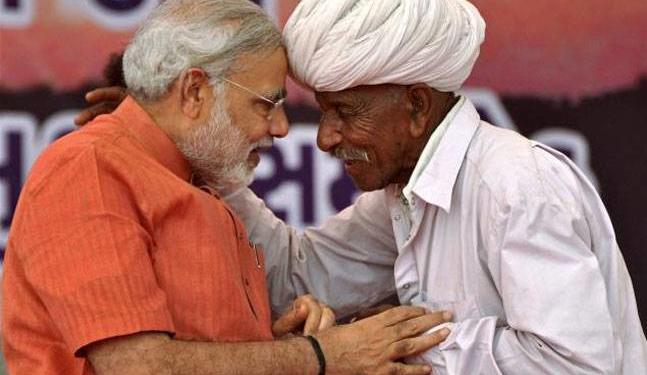Modi government is likely to announce Direct Benefit Transfer (DBT) of 4,000 rupees per acre and interest-free crop loan up to 1 lakh rupees in two-fold for the farmers. The DBT is expected to cost around 2 lakh crore rupees while the interest payment will cost another 28,000-30,000 crore rupees. The scheme might be announced in the current week as meetings regarding the issue have been called at PMO and NITI Aayog. The concerned ministries like the Ministry of Agriculture, Ministry of Finance, Ministry of Chemical and Fertilizers, and Ministry of Food Processing have been asked to meet and iron out differences, if any, regarding the implementation. “DBT works differently at present, with a limited but pivotal role of the manufacturers. With this, we will be successful in plugging the pilferage and will also reach the actual beneficiary,” said an official.
The DBT worth 4,000 rupees per acre per season will be given for input purchase like seeds, fertilizers, pesticides, and labor. The government also seems to mull a zero-interest-rate loan worth 50,000 rupees per hectare capped at 1 lakh per farmer. The crop loan to farmers is already subsidized by the government and fixed at 4 percent through which they can avail loans at zero interest rate up to 1 lakh rupees. The agricultural loan disbursal target of 10 lakh crore set by Modi government for 2017-18 has already been achieved. The central government has proposed a 70:30 ratio for sharing the financial burden with states. However, some states like Telangana, Odisha, Andhra Pradesh, Karnataka, and West Bengal are expected to not take up the scheme as they fear that BJP could reap political dividends out of the scheme.
In a farmers’ rally in Uttar Pradesh, PM Modi had announced government’s target to double the farmers’ income by 2022. The Centre formed an 8 member inter-ministerial committee under Ashok Dalwai, Additional Secretary at the Union Agriculture Ministry to suggest steps to double farmers’ income. After the formation of the committee, the government took various steps on its suggestions to solve farmer’s distress.

In June 2016, ‘Pradhan Mantri Fasal Bima Yojna’ (PMFBY) was rolled out to ensure crops. The insurance scheme made farming as secure as any other profession. If crop suffers due to reasons like drought, excessive rain, insurers will be required to pay the output price. To provide irrigation facilities to farmers across the country, PM Modi launched ‘Pradhan Mantri Krishi Sinchai Yojana’ (PMKSY) and pumped money into the ‘National Bank for Agriculture and Rural Development’ (NABARD) to increase credit penetration for farmers. The steps taken by the government coupled with good monsoon proved beneficial for agriculture and the sector grew at 6.3 percent in the fiscal year 2016-17. However, growth moderated to 3 percent in 2017-18 due to the high base effect. In the first quarter of this financial year, agricultural growth was 5.3 percent compared to 3 percent in the same period last year.
The government is trying to solve the post-production problem through incentivizing exports. As India produces more than it consumes, the price of agriculture produce generally crashes and these required steps like encouraging exports to be solved. The government plans to introduce region-specific special agricultural produce zones to boost agricultural exports. The exports rose significantly in the FY 2018, and the country exported agricultural commodities worth $ 38.74 billion, as against imports of $ 24.89 billion which resulted in a farm trade surplus of $ 13.85 billion. The surplus for 2016-17 and 2015-16 was $ 8.05 billion and $ 10.23 billion respectively.































